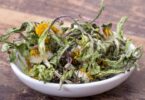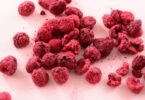Learn how to dry calendula flowers at home!
If you are cultivating calendula in your vast home garden or on your small farm, you most likely intend to use it or sell it once it has been dried or after it has been processed into a calendula product. Calendula flowers that have been dried can be reconstituted into salves, oils, and beverages.
To prepare the calendula for later use, you will need to first harvest and dry the plant.
SEE ALSO: How to Dry Flowers – From Harvesting to Drying Flowers
Harvesting Calendula Flowers
When to Harvest Calendula Flowers
After the morning dew has evaporated, the morning is the ideal time to collect calendula blossoms for harvesting. They are new and open to the sun, yet their petals are not damp in any way.
In addition, you should pluck the flowers when they have only opened halfway. As soon as they pass this stage, they continue to expand more, but they are no longer at their peak for therapeutic use and the petals start to wither.
When collecting calendula, the resin on the plant may cause your fingertips to get slightly sticky. This is a great thing and nothing to fret about! The resin, which has significant antifungal effects, is the source of the vast majority of the plant’s curative potency.
How to Harvest Calendula Flowers
When it comes to calendula, harvesting it more frequently is preferable. If you let the blooms remain on the plants after they have died, they will produce seeds. The flowers will come back and even increase when you deadhead your plants regularly. Therefore, clip early and snip frequently!
The calendula plant is often harvested by cutting off the flower head that is located at the very top of the stem. You may either cut the stem with scissors or squeeze it with your fingertips. It is recommended that you cut back the stem that is still attached to the plant to prevent the stem from becoming rotten.
You could also pick entire plants, including the leaves. They have much of the same medicinal value as the flowers, but it is much simpler to regularly gather flower blossoms from a patch of calendula throughout the season. The leaves have much of the same medicinal content as the flowers.
If you do miss some and they appear to be less than fresh on the plant, you should go ahead and leave them; calendula flowers easily go to seed, and you will be able to harvest the seeds after they have dried up to grow even more calendula the following year.
Here is a great video about crowing and harvesting calendula.
The Best Methods of Drying Calendula Flowers
Drying calendula flowers is very simple.
- The fundamental concept is to facilitate air circulation while also offering protection from an excessive amount of sun. If you are drying calendula flowers outdoors, dry in a shady area.
- Blooms should not be washed before being dried. If necessary, give them a light shake to get rid of any dust or insects that may be within.
- During the drying process, calendula should not be subjected to excessive heat. The heat will denature and destroy a significant portion of the components that make it therapeutic. Because of this, it is not advisable to dry these flowers in an oven.
Air Drying Calendula Flowers
Spread flowers out on a surface with adequate ventilation, such as fabric, screen, or a mesh of some kind. Drying screens may be constructed out of light timber and screen by constructing a frame and then stapling the screen to the frame.
You might even construct a cabinet to house the screens and install a fan inside of it to facilitate air circulation. Make sure that the flowers are completely dry to the touch after drying them using this approach, which can take up to a week, depending on the weather and other environmental factors.
Drying Calendula Flowers with a Dehydrator
You may dry the calendula by using an electric dehydrator inside the house.
- Temperatures in the range of 90 to 95 degrees Fahrenheit should be used. Make sure you avoid direct heat blowing on the blossoms.
- When drying flowers in an electric dehydrator at this temperature, it typically takes around 24 hours for them to be completely dry.
How to Store Dried Calendula Flowers
When your calendula flowers have reached a dry state, you may then put them away. But keep in mind that they need to be absolutely, positively dry before being sealed in a container, or else mold may begin to grow on them. The dry time for the green center head of the flower will be significantly longer than that of the petals.
When your flowers have reached their desired level of dryness, they will become brittle and the petals will readily separate from the core heads. When in doubt, leave them for longer than is really required; this is preferable to the alternative, which is to wind up losing all of your dried calendulas.
You have the option of removing the petals from the heads and storing them simply the petals themselves, or you may choose to keep the petals on the heads. Many people choose to keep the flower heads and petals together in one piece when drying calendula.
The heads, which also have therapeutic characteristics, ought to be preserved in as much of their original state as possible. If you decide to save only the dried petals of the calendula plant, all that is required to separate the petals from the flower heads is a simple mixing of the dried flowers in a bowl using your hands.
It is recommended that you keep all of your herbs in mason jars made of glass. They are sturdy, don’t let air in, and rodents such as mice and moths are kept out. You should always store your dried calendula away from the sun. The ideal location is within a closed cabinet.
SEE ALSO: A Complete Guide on How to Store Dried Herbs
Ending the post with another great video about calendula:)





